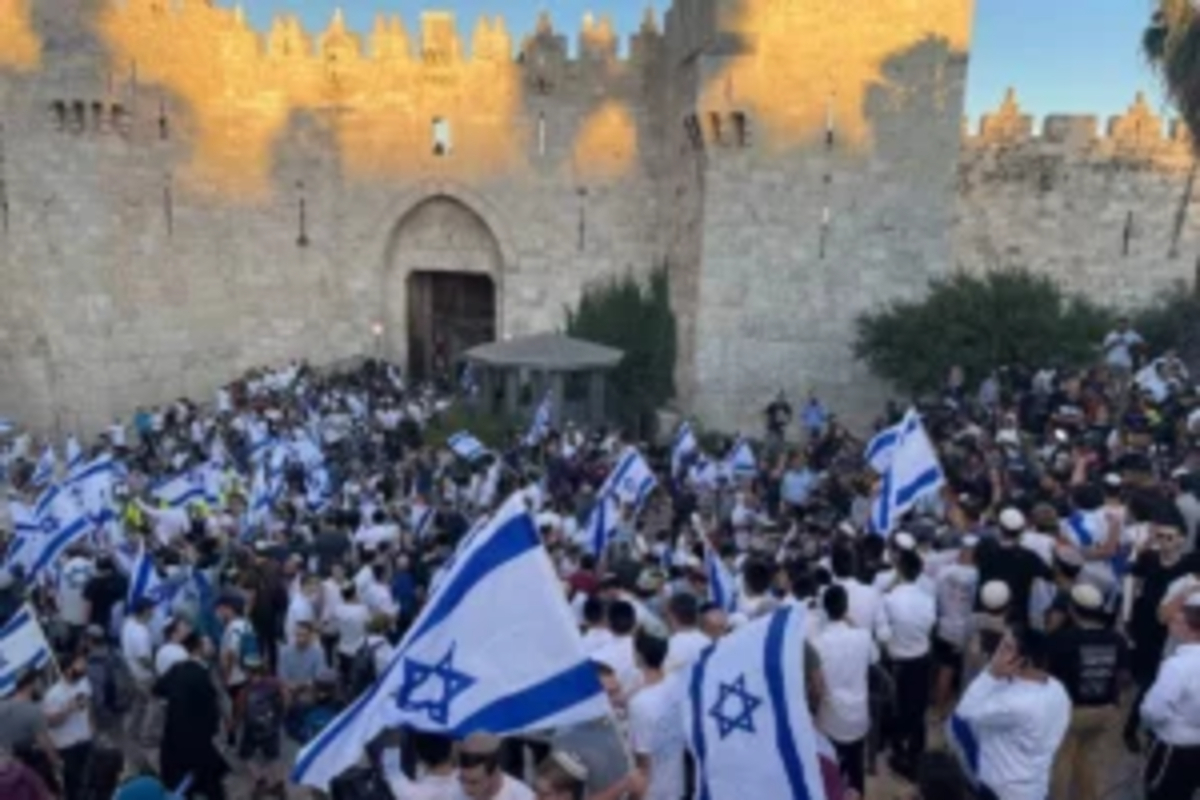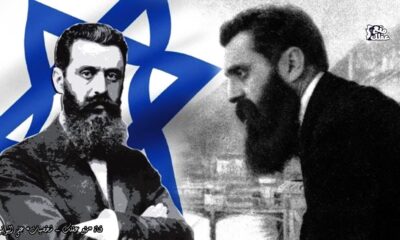I am not particularly infatuated with holding comparisons between religious Zionism and Nazi ideology. However, When I see with my eyes and hear with my ears thousands of religious Zionists who claim to be followers of Moses (peace upon him) shout in a hate march “death to Arabs” in the streets of an Arab-Muslim town, then I must call the spade a spade.
What is more outrageous is that the Israeli political establishment tolerates and tacitly encourages this hatred which reminds us of Kristallnacht.
I know such comparisons are annoying for many Jews. But is this my fault? Should I compare this repulsive racism and hateful incitement to Mother Teresa’s charitable work in India?
Skokie-1978
In July 1978, the American Social Nationalist party (the Nazi party) announced it would organize a march of several hundred members to the small predominantly Jewish town of Skokie in the suburbs of Chicago.
The planned march was widely seen as a brazen provocation. Not the least by Skokie’s Jewish inhabitants, many of them are Holocaust survivors.
Many non-Jewish people from all over the United States voiced their solidarity with the town. Their solidarity came as vociferous demonstrations were held in Chicago and other places in protest against the despicable Nazi feat.
Despite the negative publicity and widespread opposition to the planned march, a Federal District judge allowed the march to proceed if certain conditions and restrictions were met. Moreover, the American Civil Liberty Union (ACLU) voiced its strong support for the march on the basis of the freedom of speech guaranteed by the First Amendment of the US constitution.
Eventually, the US Supreme Court declined to stay the order of Federal District Judge George N. Leighton, allowing the Nazis to demonstrate at Skokie. This, coupled with other factors. The factors including imposing a hefty fee on the organizers led to the cancellation of the march in Skokie.
This really brought a sigh of relief to anti-fascism forces, not only in the US but all over the world.
Hate March in Jerusalem: “death to Arabs“
I was still a sophomore at the University of Oklahoma when the Skokie story dominated Prime-time newscasts on the three major American TV networks namely ABC, CBS and NBC.
In class discussion, I remember I expressed my complete solidarity with the people of Skokie, especially its estimated 700 Holocaust survivors. After all, the Nazis were behaving beyond Chutzpah and adding insult to injury towards these people, who had survived despite history.
“Death to Arabs” means “death to Arabs,” not “death to Martians.”
Today, we are once again being affronted by another Skokie-style hate march. Last week, an Israeli court allowed extremist Jewish fanatics to hold a provocative rally in Arab-East Jerusalem, still under the Israel military occupation since 1967.
Last year, participants in the annual so-called “Jerusalem Day,”/a hate march marking the annual anniversary of the occupation of the Arab-Islamic holy city, cursed the Prophet of Islam (may peace be upon him), shouted “mavet le Arabim” or death to the Arabs, and called for the expulsion of Muslims and Christians from Palestine.
Read More: Israel is and will always be a crime against humanity
God knows that using epithets like fanatics and extremists to describe these haters is a serious understatement and a scandalous trivialization of reality.
However, we all must understand that there are limits to the use of euphemisms to communicate an otherwise ugly reality.
The world didn’t lecture Jews on how to relate to their tormenters and grave-diggers. Likewise, we will not allow anyone to dictate to us how we should relate to our own tormentors and grave-diggers. After all, death to the Arabs means death to the Arabs, not death to Martians.
Government of settlers, for settlers, and by settlers
The Israeli government thinks twice before upsetting these fanatics/religious Zionists who adopt a decidedly toxic ideology, based on a venomous combination of racism, bigotry, hatred, violence, vindictiveness, and ethno-religious superiority against Arabs.
Many of them are graduates of Talmudic schools known as “Yeshivot” which indoctrinates them in the genocidal, racist ideology of religious Zionism.
Interestingly, these extremists/ religious-Zionist constitute the main electoral base for right-wing Israeli parties, including Yamina, the party of Israeli Prime Minister Naftali Bennet.
Hence, Bennet is very careful not to alienate them.
Toxic theology
The ideology of Religious Zionism (RZ), the official ideology of Prime Minister Naftali Bennet, has been dominant in Israel ever since the Likud reached power for the first time in 1977. It is much more than just racist against non-Jews. It is actually more or less genocidal. I wouldn’t go that far if I didn’t know what I was talking about.
In May 2007, Mordechai Elyahu, a former Chief Rabbi of Israel, issued an edict that would permit the Israeli army to murder hundreds of thousands of Palestinians and Arabs.
“If they don’t stop after we kill 100, then we must kill a thousand. And if they don’t stop after 1,000, then we must kill 10,000. If they still don’t stop we must kill 100,000. Even a million. Whatever it takes to make them stop.”
Also Read: Israel has killed 55 Palestinian journalists since 2000
Humane Jewish traditions
I don’t believe that this repulsive extremism represents true Judaism, the Judaism that is based on the Ten Commandments.
Jewish traditions relate the story of a heathen who came to Shammai with the request to be accepted as a convert on the condition that he was taught the whole Torah while he stood on one foot. Shammai drove him away with the yard-stick he was holding. Then the man went to Hillel with the same request. Hillel told the man “what is hateful to yourself don’t do to your fellow human being. That is the whole of the Torah and the rest is commentary.”
Unfortunately, the rabbis of religious Zionism, including the so-called Chabadim who have effectively replaced the Torah with a notoriously racist manual called “Hatanya,” pay no attention to such traditions. And when they are reminded of them, they arrogantly claim that words such as “man” or “human being” refer solely and exclusively to the “Jew.”
Recalcitrance
Earlier this week, the Bennet government refused an American request to reconsider the route of the planned March. One Palestinian official commented on this matter, saying “If Israel could say “No” to its guardian-ally, on such a small and trivial matter, and with the utmost contempt, it should be absolutely futile to expect the US to pressure Israel to end the occupation and allow for the establishment of a sovereign and independent Palestinian state.


 Featured2 years ago
Featured2 years ago
 Featured3 years ago
Featured3 years ago
 Featured2 years ago
Featured2 years ago
 Featured4 years ago
Featured4 years ago
 Featured3 years ago
Featured3 years ago
 Featured5 years ago
Featured5 years ago
 Featured2 years ago
Featured2 years ago
 Featured3 years ago
Featured3 years ago



















